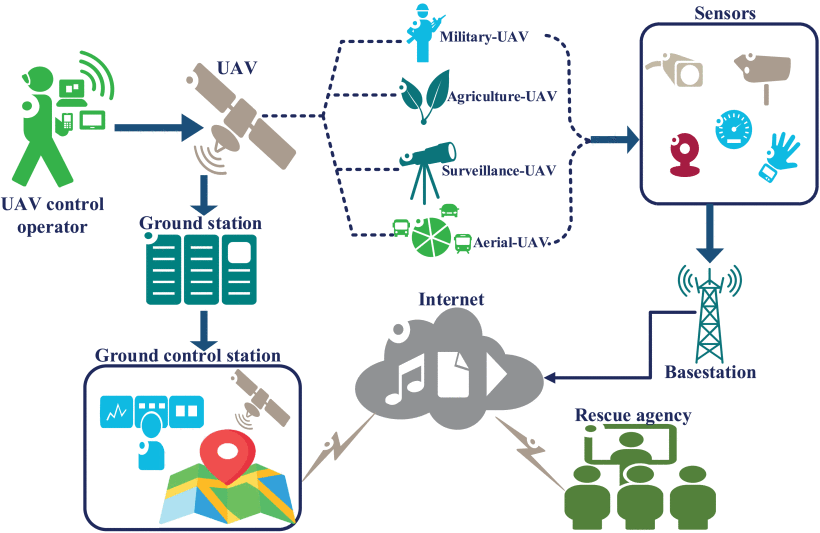Unmanned Aerial Vehicles in Smart Agriculture: Applications, Requirements, and Challenges
UAVs are autonomous flying machines with sensors and cameras in different spectrums of light installed to communicate information about the target location, and it can be controlled remotely. UAVs are proving to be immensely useful in smart farming, which is becoming a Global phenomenon due to the growing population and increasing food demand.
Various technologies, like WiFi or ZigBee, are used to control the UAVs remotely. However, among them, smart Bluetooth, also referred to as Bluetooth Low Energy (BLE), provides superior privacy and micro-locating feature with low power consumption and cost of deployment. So, for small data transfers from sensors, GPS systems, etc. BLE is the best mode of wireless communication in the agricultural sector.
Multirotor UAV is the easiest and cheapest solution for short-time monitoring but has limited speed and flying time. Single-rotor UAVs can be operated longer and more efficiently than multirotor UAVs, but the cost, maintenance, and operational risks are the disadvantages. Fixed-wing UAVs can operate longer but cannot hover and require a runway. Hybrid VTOL (vertical take-off and landing) has the advantages of multirotor and fixed-wing UAVs.
Different sensors are used to monitor agriculture. GPS provides the location of the targeted area. The temperature and humidity sensors sense the ambient conditions around the plantation area. Optical sensors visualize problems by sensing different agricultural parameters. Visible light sensors are the cheapest solution for crop and irrigation monitoring. Multi-spectral and hyper-spectral sensors are essential to get the data regarding plant health, irrigation scheduling from soil and crop features, biomass and vegetation evaluation, etc. Hyperspectral optical sensors use CCD (charge-coupled device) and CMOS (complementary metal-oxide-semiconductor) cameras for higher-resolution images in higher spectral and spatial ranges.
Besides field monitoring, UAVs are used for uniform spraying of chemicals like fertilizers, pesticides, etc. Thermal imaging helps in this regard by evaluating droplet deposition on the plants and the field. UAVs can guide farming animals toward the shelter, milking, or grazing areas with embedded cameras, sirens, and GPS receivers. The UAVs equipped with artificial intelligence (AI) could be used for artificial pollination.
Air traffic control has become essential for smart farming, where more UAVs are being used in agriculture. Intel has developed Bluetooth technology to broadcast and track the aerial locations of UAVs. With state-of-the-art technologies, remote and automatic control of the UAVs, and with better training, it can increase farmers' efficiency and economy.
For efficient and precision farming, the technology requirement of the UAVs can be summarized by their data storage capacity, network availability and interference, security and privacy, efficiency, energy consumption, etc. Reputed companies like Google, Qualcomm, Andreessen Horowitz, GAMAYA, Draper Associates, etc., are investing in the industrial manufacturing of UAVs. However, country-specific operating regulations and legal norms regulate the deployment of UAVs, thus creating a challenge. UAV technology acceptance among farmers through training and skill development programs should also be a primary focus for the industry and farming institutions.
However, with the increasing population, smart and precision farming is a must for human sustainability in the future. UAVs and related sensor technologies are a step towards achieving the goal.




